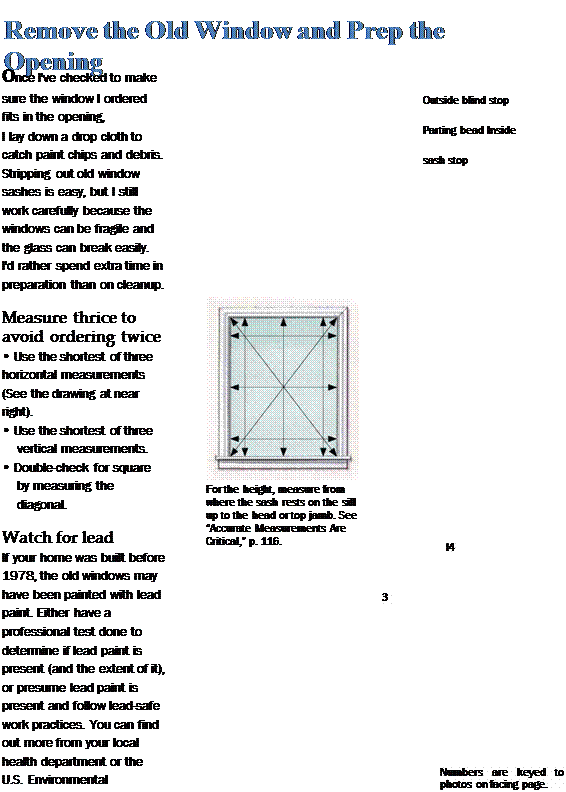Windows ■ BY MIKE GUERTIN
|
W |
indows wear out before a house does. Sometimes the need for replacement windows is obvious, such as when you encounter poorly functioning single-pane sashes with weights. But even windows with insulated glass become difficult to operate, suffer from damaged seals, or show signs of deterioration.
The good news is that replacement windows eliminate these problems, offering improved appearance and easier operation, along with greater levels of energy efficiency. Window replacement could save you 5% to 15% off your heating and cooling bills, but how much you’ll save depends on where you live (the potential is much higher in cold climates) and how inefficient your existing windows are.
In some cases, air sealing and better insulation elsewhere in your house (see "Home Remedies for Energy Nosebleeds," pp. 12-19) offer more bang for your energy buck. The best way to tell is with a home-energy audit, which will identify the biggest deficiencies in your home’s energy envelope (see "Every House Needs an Energy Audit," pp. 4-11).
If you find that your windows are costing you energy dollars, you can go one of two ways: Hire a full-service installer to measure, order, and install new windows for you; or buy and install them yourself. Replacement windows are easy to order and quick to install, and you can save money if you tackle this project yourself.
The installation shown here took place in a modest Cape that still had its original singleglazed, sash-weighted windows—a perfect candidate for replacement windows. I chose frame-and-sash replacement windows (also known as pocket windows) because the existing window jambs, sills, and trim were solid, and the siding was in good condition. Had the window frames been rotted or the siding in need of replacement, I would have had to install new-construction windows using the old rough openings. The budget didn’t allow for the extra labor to tackle full
 |
 |
window replacement, which would have required the siding to be stripped back, and the interior and exterior trim to be removed and then reinstalled or replaced.
Finally, I didn’t want to disturb the homeowners. Pocket windows are quick to install and create little mess inside or out. On average, working alone, I can install one in less than 30 minutes.
As a contractor, I order windows directly from more than a dozen manufacturers. Some are national, others regional, and a couple make their windows locally near where I work. National and regional manufacturers generally don’t sell directly to
 |
![]()


|
|
2. 

 Carefully remove the sashes. swing the inside sash out of the window opening, and cut the counterweight cords to free the sash. Remove the small parting bead between the sashes, and take out the outer sash the same way.
Carefully remove the sashes. swing the inside sash out of the window opening, and cut the counterweight cords to free the sash. Remove the small parting bead between the sashes, and take out the outer sash the same way.
|
|
3. 
 Remove the weights. open the counterweight doors to remove the weights and cords; then unscrew the pulleys and remove them. some installation guides suggest hammering the old pulleys into the jamb, but I disagree. The pulley holes make good view spots when installing insulation.
Remove the weights. open the counterweight doors to remove the weights and cords; then unscrew the pulleys and remove them. some installation guides suggest hammering the old pulleys into the jamb, but I disagree. The pulley holes make good view spots when installing insulation.








Leave a reply